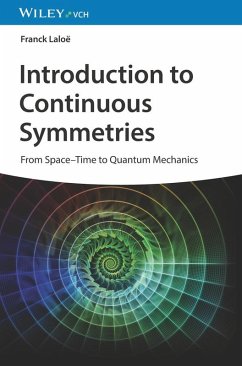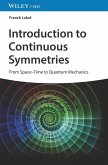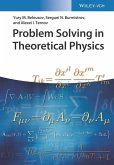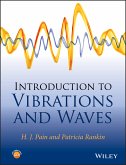Introduction to Continuous Symmetries
Powerful and practical symmetry-based approaches to quantum phenomena
In Introduction to Continuous Symmetries, distinguished researcher Franck Laloë delivers an insightful and thought-provoking work demonstrating that the underlying equations of quantum mechanics emerge from very general symmetry considerations without the need to resort to artificial or ambiguous quantization rules. Starting at an elementary level, this book explains the computational techniques such as rotation invariance, irreducible tensor operators, the Wigner-Eckart theorem, and Lie groups that are necessary to understand nuclear physics, quantum optics, and advanced solid-state physics.
The author offers complementary resources that expand and elaborate on the fundamental concepts discussed in the book's ten accessible chapters. Extensively explained examples and discussions accompany the step-by-step physical and mathematical reasoning. Readers will also find:
Perfect for students of physics, mathematics, and theoretical chemistry, Introduction to Continuous Symmetries will also benefit theoretical physicists and applied mathematicians.
Powerful and practical symmetry-based approaches to quantum phenomena
In Introduction to Continuous Symmetries, distinguished researcher Franck Laloë delivers an insightful and thought-provoking work demonstrating that the underlying equations of quantum mechanics emerge from very general symmetry considerations without the need to resort to artificial or ambiguous quantization rules. Starting at an elementary level, this book explains the computational techniques such as rotation invariance, irreducible tensor operators, the Wigner-Eckart theorem, and Lie groups that are necessary to understand nuclear physics, quantum optics, and advanced solid-state physics.
The author offers complementary resources that expand and elaborate on the fundamental concepts discussed in the book's ten accessible chapters. Extensively explained examples and discussions accompany the step-by-step physical and mathematical reasoning. Readers will also find:
- A thorough introduction to symmetry transformations, including fundamental symmetries, symmetries in classical mechanics, and symmetries in quantum mechanics
- Comprehensive explorations of group theory, including the general properties and linear representations of groups
- Practical discussions of continuous groups and Lie groups, in particular SU(2) and SU(3)
- In-depth treatments of representations induced in the state space, including discussions of Wigner's Theorem and the transformation of observables
Perfect for students of physics, mathematics, and theoretical chemistry, Introduction to Continuous Symmetries will also benefit theoretical physicists and applied mathematicians.
Dieser Download kann aus rechtlichen Gründen nur mit Rechnungsadresse in D ausgeliefert werden.









